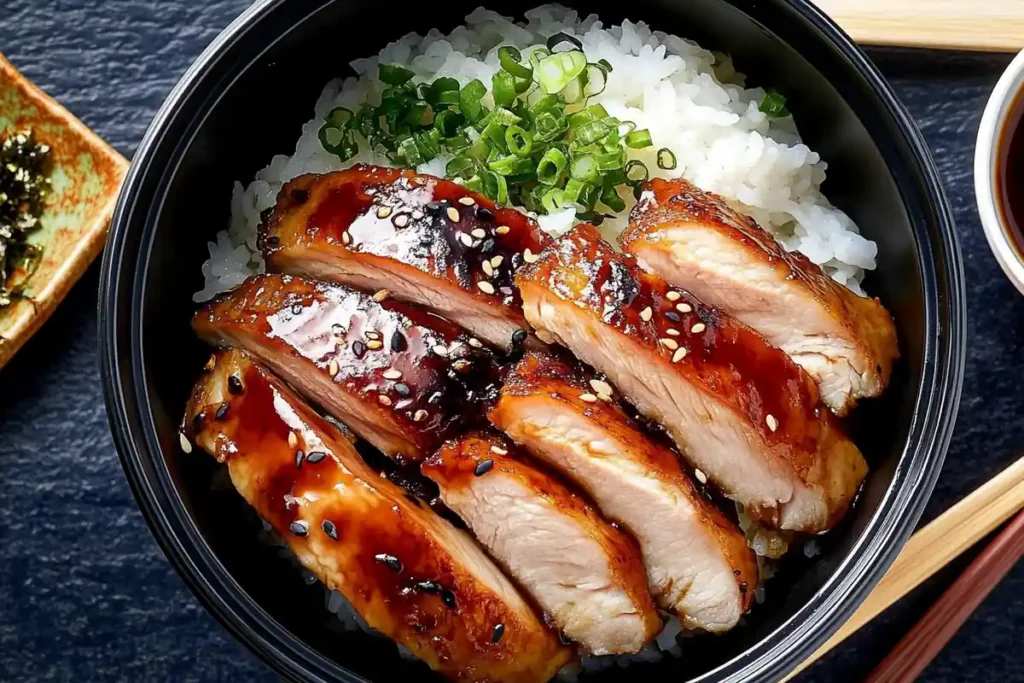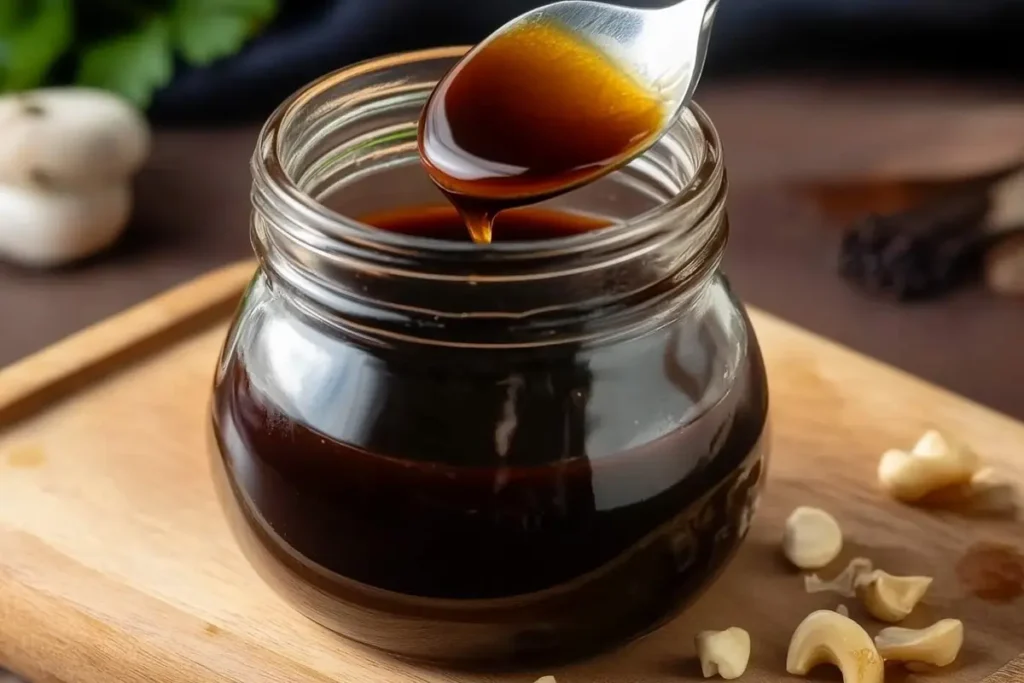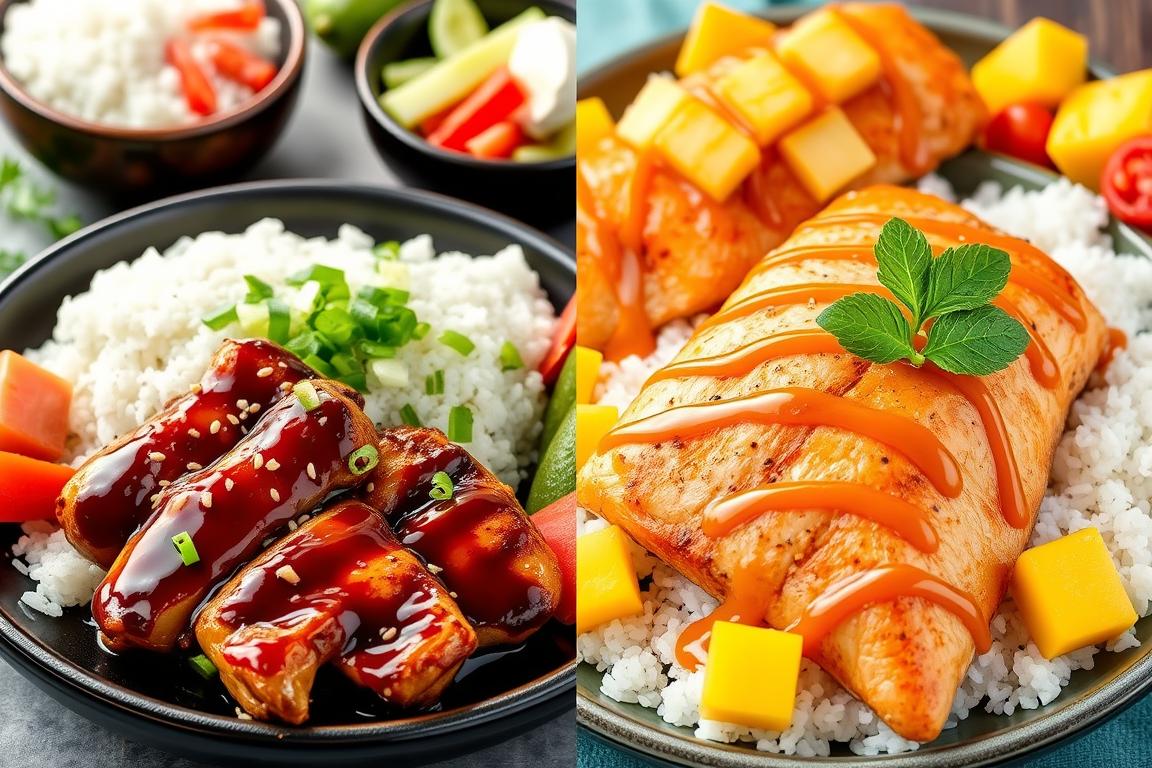“What’s the difference between Japanese teriyaki and Hawaiian teriyaki?” It’s a question that might test your taste knowledge! The story of Japanese and Hawaiian teriyaki is a tasty adventure. It starts in Japan with fish and becomes sweet and tangy in Hawaii. This journey shows how teriyaki changed and became loved worldwide.
Did you know about Seattle’s special link to teriyaki? Toshi’s Teriyaki opened there in 1976 as the first. By 1996, Toshi’s grew to 17 spots in Seattle, showing the love for teriyaki. Today, 83 Seattle restaurants with teriyaki in their names are listed. Also, teriyaki festivals by Japanese-American churches highlight its cultural value.
Teriyaki changed once it reached Hawaii. It mixed with local tastes, adding pineapple juice and brown sugar. This Hawaiian style stands out with its sweet flavor. It shows how teriyaki remains a favorite in many places.
The History of Teriyaki: From Japan to Hawaii
Teriyaki’s journey began in Japan and made its way to Hawaii. This sauce’s journey shows how cultures can mix and change. It’s a story of tradition and new twists, mixing to create something loved.
Traditional Teriyaki Origins
In Japan, during the Edo period (1603-1868), teriyaki was born. “Teri” means shine, and “yaki” means grill. Originally, teriyaki was a simple mix of soy sauce, sake, mirin, and sugar used on fish. This made the fish look shiny and taste great.
Arrival in Hawaii
Japanese immigrants brought teriyaki to Hawaii, and with it, their treasured recipes. Once in Hawaii, they used new local ingredients. This started the creation of what many know as Hawaiian teriyaki today.
Hawaiian Adaptations
In Hawaii, the sauce became something new. With pineapple juice and brown sugar, a new kind of teriyaki was born. It was sweeter and tangier than before. Now, Hawaiian teriyaki is loved worldwide for these unique tastes.
| Aspect | Japanese Teriyaki | Hawaiian Teriyaki |
|---|---|---|
| Main Ingredients | Soy Sauce, Sake, Mirin, Sugar, Ginger | Pineapple Juice, Brown Sugar, Soy Sauce, Ginger, Green Onions |
| Typical Proteins | Fish, Chicken, Beef | Chicken, Beef, Pork |
| Cooking Methods | Grilling, Broiling | Grilling |
| Flavor Profile | Salty and Sweet | Sweet and Tangy |
Authentic Japanese Teriyaki Ingredients

The heart of a true Japanese teriyaki recipe is its special ingredients. This sauce started in Japan during the Edo period. It mixes various flavors for its unique taste. Let’s look into the main parts that make this sauce stand out.
Soy Sauce and Sake
Soy sauce is key in many Japanese meals, including teriyaki sauce. It brings a deep umami taste. Mixed with sake, a Japanese rice wine, they balance each other. Together, they’re vital for soaking meats and veggies with rich flavors before cooking.
Mirin and Sugar
Mirin, a sweet rice wine, is special in Japanese teriyaki. It has less alcohol than sake, about 14%. Mirin brings sweetness and a shiny look to the sauce. With sugar, it makes a glaze that boosts the dish’s taste and look.
Additional Flavor Enhancers
Other ingredients like ginger, garlic, and honey also enhance teriyaki sauce. Ginger adds a slight kick. Garlic brings depth. Honey gives a smooth sweetness. Some recipes may include cornstarch to thicken or vinegar for a bit of tartness.
| Key Ingredients | Function |
|---|---|
| Soy Sauce | Base flavor, umami |
| Sake | Enhances umami, adds depth |
| Mirin | Sweetness, glossy finish |
| Sugar | Caramelization, sweetness |
| Ginger | Spice, aroma |
| Garlic | Depth, flavor enhancement |
| Honey | Natural sweetness |
Knowing these ingredients shows the depth and richness of Japanese teriyaki sauce. Using them in a marinade or glaze keeps your dishes true and tasty.
Unique Ingredients in Hawaiian Teriyaki
The Hawaiian teriyaki recipe mixes traditional Japanese flavors with a special island twist. This is thanks to unique island ingredients. These ingredients make the teriyaki sauce special and give Hawaiian dishes a distinct flavor.
Pineapple Juice
Pineapple juice is key to Hawaiian teriyaki. It adds a sweet and tangy taste. This makes Hawaiian teriyaki stand out from the Japanese version. It also tenderizes the meat and gives it a tropical touch.
Brown Sugar
Brown sugar makes Hawaiian teriyaki unique too. Unlike Japanese teriyaki, which uses mirin for sweetness, brown sugar gives a deeper flavor. It also makes a nice glaze on the meat. This makes the dish look good and taste delicious.
Local Influences
Hawaiian teriyaki also includes local favorites like ginger and garlic. These amplify the taste and add depth. This blend of flavors started in the early 20th century with Japanese immigrants. They mixed their traditional recipes with what was available locally.
| Ingredient | Role in Teriyaki | Flavor Profile |
|---|---|---|
| Pineapple Juice | Tenderizes and adds tropical sweetness | Sweet and Tangy |
| Brown Sugar | Caramelizes to create a rich glaze | Sweet and Deep |
| Ginger | Adds aromatic spice | Sharp and Warm |
| Garlic | Enhances savory undertones | Bold and Pungent |
What’s the difference between Japanese teriyaki and Hawaiian teriyaki?
Japanese and Hawaiian teriyaki are unique in their own ways. Both styles use different ingredients and methods. Knowing these differences helps understand each style better.
Japanese teriyaki uses soy sauce, sake, mirin, and sugar. This mix makes a shiny sauce that brings out meat’s taste. Fish like yellowtail, or chicken, are often used. The Japanese style focuses on simplicity and enhancing each ingredient’s flavor.
Hawaiian teriyaki is sweeter, inspired by various cultural influences. It often includes shoyu, garlic, ginger, and sugar. Hawaiians usually cook without strict recipes. This allows for a more personal touch in cooking.
Pineapple juice adds a tropical taste to some American teriyaki recipes. Its sweetness and tenderizing features fit the Hawaiian style well.
The New York Times said Seattle’s teriyaki is Japanese in name only. It’s fast food there, with a unique twist.
Hawaiian teriyaki often uses flank steak or chicken. The meat is marinated then caramelized on a griddle for a sweet glaze.
- Japanese teriyaki balances soy sauce, sake, mirin, and sugar.
- Hawaiian teriyaki is sweeter, using shoyu, garlic, ginger, and sugar.
- Intuitive cooking is a hallmark of the Hawaiian approach.
- Used proteins: Japanese (fish, chicken); Hawaiian (flank steak, chicken).
- Marinade caramelization is crucial for Hawaiian teriyaki.
| Aspect | Japanese Teriyaki | Hawaiian Teriyaki |
|---|---|---|
| Base Ingredients | Soy Sauce, Sake, Mirin, Sugar | Shoyu, Garlic, Ginger, Sugar |
| Main Proteins | Fish, Chicken | Flank Steak, Chicken |
| Flavor Profile | Balanced Sweet-Savory | Richer, Sweeter |
| Cooking Technique | Grilling | Marinating and Caramelizing on Griddle |
| Special Ingredients | Mirin | Pineapple Juice (sometimes in North America) |
Exploring teriyaki shows Japanese and Hawaiian versions are both appealing. Each version celebrates its region’s culinary heritage uniquely.
Cooking Methods: Grilling vs Broiling
Explore the world of teriyaki cooking. See how it has won hearts all around. See the grill magic from Japan and the unique broil touch from Hawaii. Each brings its own story to your taste buds.
Japanese Grilling Techniques
Teriyaki found its roots in Japan’s Edo period, mainly for fish along the coast. Japanese grilling mixes the glaze and protein perfectly. It makes every bite a blend of traditions and flavors. This method is not just about cooking. It’s a way to bring people together outdoors.
Hawaiian Grilling Style
When teriyaki reached the United States and Hawaii in the 20th century, it evolved. The Hawaiian take mixes in tropical tastes, like pineapple juice. This twist adds a new layer to the traditional taste. Grilling teriyaki in Hawaii mixes cultures in every bite, loved by many.
Flavor Infusion through Cooking
In Hawaii, broiling teriyaki is a favorite. It thickens the sauce and deepens the flavor. It’s different from Japanese grilling, which keeps the glaze light but tasty. Broiling caramelizes the sugar for richness. Grilling gives a smoky touch. Both methods show the beauty of teriyaki in dishes.
Popular Dishes Using Japanese Teriyaki Sauce
Japanese teriyaki dishes are famous for their sweet and savory tastes. They show the heart of traditional Japanese food.
Teriyaki Fish
In Japan, teriyaki fish like salmon or mackerel is a favorite. It’s marinated in soy sauce, mirin, and sugar, then grilled. This cooking style brings out the fish’s fresh and tender nature. It’s loved at family events and cultural festivals. Teriyaki fish has become known worldwide, thanks to Japanese immigrants.
Teriyaki fish is linked with special times and outdoor grilling. It’s about being together and celebrating. The marinade and grilling keep the fish moist and tasty. The glaze gets a bit caramelized, contrasting with the soft fish inside.
Teriyaki Chicken
Unlike teriyaki fish, teriyaki chicken is newer but has quickly become popular. In the Meiji era, teriyaki started including chicken, beef, and pork. Now, teriyaki chicken is a top choice for many. It’s known for its juicy feel and rich taste.
To make it, one marinates chicken thighs or breasts in soy sauce, mirin, and sugar. Sometimes ginger and garlic are added. Then it’s grilled or broiled. The sauce turns into a glossy, caramelized topping. Teriyaki chicken is a hit in bento boxes, social events, and cookouts.
- Ingredients: Soy sauce, mirin, sugar, ginger, and garlic.
- Cooking Method: Marination followed by grilling or broiling.
- Popular Accompaniments: Steamed rice, sautéed vegetables, and pickled sides.
| Dish | Main Ingredient | Preparation |
|---|---|---|
| Teriyaki Fish | Salmon/Mackerel | Marinated & Grilled |
| Teriyaki Chicken | Chicken Thighs/Breasts | Marinated & Broiled/Grilled |
Both teriyaki fish and chicken show how flexible Japanese teriyaki dishes can be. They bring joy to your taste buds, whether it’s a traditional meal or a new dish.
Popular Dishes Using Hawaiian Teriyaki Sauce

Hawaiian Teriyaki sauce adds sweet and tangy flavors to many dishes. It’s great for a classic Hawaiian Teriyaki Chicken or island-style fusion dishes. There’s always something enjoyable to try.
Hawaiian Teriyaki Chicken
Hawaiian Teriyaki Chicken mixes soy sauce, pineapple juice, brown sugar, and garlic for marinating. After grilling or broiling, you get juicy, tasty chicken. It’s great with rice or salad. People love this recipe, giving it a 4.98 rating from 102 votes.
Hawaiian Grilled Teriyaki
The Hawaiian Grilled Teriyaki style adds a tropical flavor with pineapple juice. A serving has 523 calories, 53g of carbs, 27g of protein, and 23g of fat. It’s a delicious blend of many cultures.
Island-Style Fusion Dishes
Island-style dishes show how versatile teriyaki sauce is. You can make chicken tacos or poke bowls with a twist. These creative dishes show teriyaki’s role in Hawaiian food.
Comparing Flavor Profiles
When looking at teriyaki, Japanese and Hawaiian types are quite different. Japanese teriyaki is balanced, mixing sweet and savory. But Hawaiian teriyaki is sweeter with a bit of acid.
Sweetness and Savory Balance
The sweetness marks a big difference between the two styles. Japanese teriyaki uses mirin and sugar for a gentle taste. It stays balanced with the savory taste from soy sauce.
Hawaiian teriyaki, though, goes big on sweetness. It uses pineapple juice and brown sugar. This makes for a strong, tropical flavor.
The Role of Acidity
Acidity also separates the two. In Japanese teriyaki, acidity plays a small part. It keeps the savory taste clear.
For Hawaiian teriyaki, pineapple juice brings acidity. This cuts through the sauce’s richness. It also makes the flavor more complex and refreshing.
| Aspect | Japanese Teriyaki | Hawaiian Teriyaki |
|---|---|---|
| Sweetness Source | Mirin, Sugar | Pineapple Juice, Brown Sugar |
| Savory Balance | Subtle and Balanced | Pronounced and Tropical |
| Acidity | Minimal | Highlighted through Pineapple Juice |
| Overall Flavor | Delicate | Robust and Exciting |
Conclusion
Teriyaki has grown a lot from its early days to become a favorite worldwide. It started in Japan during the Edo period. The word teriyaki combines “teri” (shine) and “yaki” (grill or broil).
This gave us the shiny, glazed dish we love. Initially, it was mainly fish. But later, other meats like chicken and beef were added.
Japanese immigrants brought teriyaki to North America. It became very popular, especially in Hawaii. Here, local touches like pineapple juice and brown sugar were added. This created a special Hawaiian style.
Despite their shared base of soy sauce, mirin, and sugar, Japanese and Hawaiian teriyaki differ. Japanese teriyaki focuses on traditional ways and balance. But Hawaiian teriyaki is known for its bold, tropical taste.
Comparing Japanese and Hawaiian teriyaki shows their unique and shared traits. Whether you like Japanese teriyaki’s classic taste or Hawaiian teriyaki’s bold flavors, you enjoy a deep culinary heritage. Enjoy your meal!

